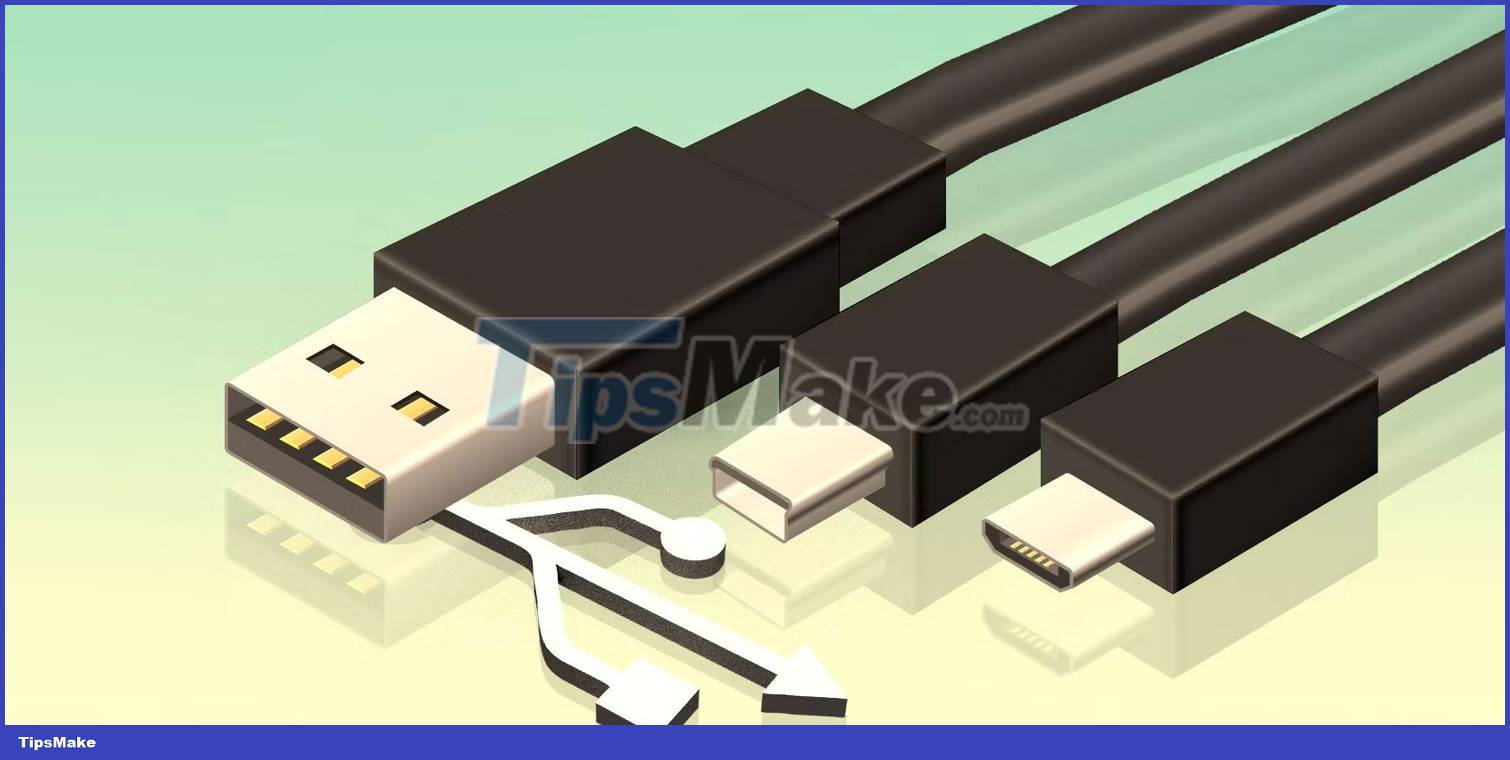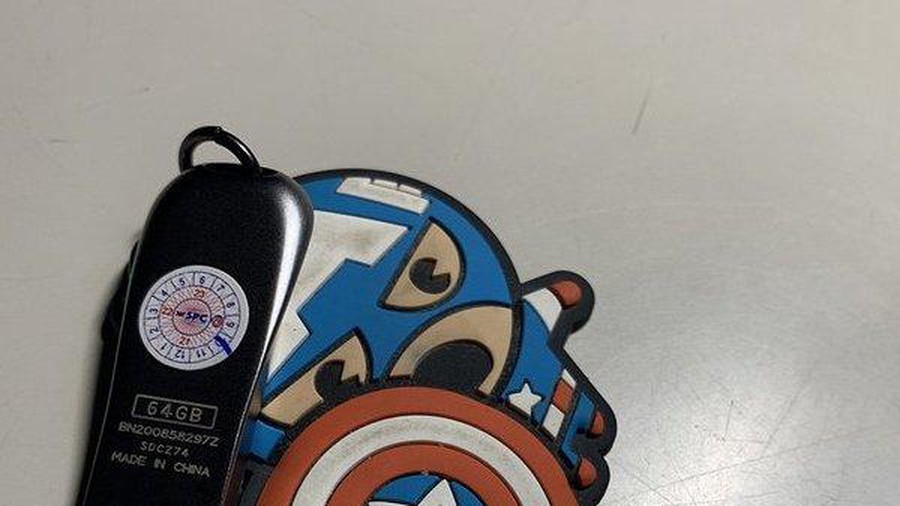5 disadvantages of the USB-C connector you should know
It includes a number of other improvements over its predecessors and could very well become the universal connector we've all been waiting for.
However, USB-C is not perfect.
1. USB-C is not as widely used as other types of USB
 5 disadvantages of the USB-C connector you should know Picture 1
5 disadvantages of the USB-C connector you should know Picture 1
Although it has been around since 2014, users and industries have not fully embraced USB-C. Given the huge improvements it brings over the older generations of USB, one would expect USB-C to take over and replace other USB connectors now and then. However, up to now, this has not become a reality.
There are a number of reasons for this lower-than-expected adoption rate, such as the increased price of USB-C devices, the unappealing device to users who don't require new features, and confusion. and around these connectors. But by far the biggest reason is that people (and organizations) actively resist change and prefer to stick with what has been tested and believed.
Apple famously refused to include USB-C charging ports on their iPhone models for a long time, and some mid-range phones still have Micro-USB ports. And while USB-C connectors are easier to find these days, the technology still seems to have a long way to go in terms of affordability and clarity about its features.
2. Lack of standardization
 5 disadvantages of the USB-C connector you should know Picture 2
5 disadvantages of the USB-C connector you should know Picture 2
Since USB-C only determines the connector type and not the actual protocol (for example, with USB-C and USB4, USB-C is the connector and USB4 is the protocol), it's hard to tell what you're doing. What do you get without scrutinizing the spec sheet? Some cables can only charge the device, while others can also transfer data.
The lack of standards on what USB-C can do makes things a bit confusing and further complicated by the fact that USB-C can do so much. This includes data transfer rates as high as 80Gbps, power delivery up to 240W, not to mention several alternate modes. Check out this list of unique USB-C features to learn more about what the interface has to offer.
It is important to read the specifications carefully before purchasing to ensure that the USB-C cable can take advantage of all the features your device has to offer.
3. The wrong USB-C charger can damage the device
This is not a problem with the USB-C standard itself, but a problem that arises when manufacturers are careless or undercut to make more profits.
User reports of device damage can be easily found when a USB-C cable is plugged in. An example is the case of engineer Benson Leung from Google, his Chromebook Pixel stopped working after connecting the USB-C cable purchased from Amazon.
This problem especially occurs with USB-A-to-USB-C cables, that is, cables with a USB-A connector (the older, larger connector that most computers used before USB-C was introduced). ) and the USB-C connector on the other side.
USB-A-to-C cables have a 56k ohm resistor inside to regulate how much power they can draw. Without this resistance, the cable would draw too much power from the device it's plugged into and could damage internal components.
Similarly, USB-C devices can be found that will only charge via a USB C-to-A cable and refuse to power with a C-to-C cable. This issue typically affects low-end USB-C products and is caused by manufacturers' poor implementation of the USB-C specification, omitting some of the resistors needed for C-to-C charging. . In this case, the USB-C cable can't tell if it's going to power the device because it doesn't have the 5.1k ohm CC1 and CC2 resistors.
It's worth noting that USB-C itself is designed to be safe, and any problems that arise during use could be the fault of the manufacturer. Therefore, you should buy cables from reputable manufacturers.
4. They are usually more expensive than older versions
As mentioned earlier, USB-C cables and devices tend to be more expensive than older generations. A full-featured USB-C cable can be sold for 3 times the price of a regular USB-A cable. For example, this full-featured USB-C to USB-C cable from HUION costs around $30, while this Amazon Basics Micro USB to USB-A 3.0 charging cable costs just $7.
USB-C is also more expensive than alternative technologies, such as DisplayPort and HDMI. You may have to spend more money on a USB-C monitor than an HDMI monitor. A good example is the $382 Dell USB-C UltraHD 27-inch monitor, which is about $100 more expensive than a similarly-featured DisplayPort/HDMI monitor, such as this 27-inch 4K Specter monitor.
USB-C is still in its infancy, and its adoption is still expanding. Also, due to the advancements in technology it brings, implementing USB-C is more expensive than its predecessors - a single USB-C port is more expensive than USB-A or MicroUSB.
5. They can be difficult to clean
 5 disadvantages of the USB-C connector you should know Picture 3
5 disadvantages of the USB-C connector you should know Picture 3
The USB-C connector is harder to clean than older USB generations. Due to its small size and more complex shape, it can be very difficult to safely get dirt and debris out of a USB-C port without damaging its pins.
You should read it
- How to Install a UHF Connector
- Managing Receive Connector - Part 4
- Managing Receive Connector - Part 3
- Managing Receive Connector - Part 2
- How to use Canon printers for new users
- Managing Receive Connector - Part 1
- How to Connect Coaxial Cable Ends
- How to Open a Molex Connector
- Chromebooks can now warn users when connecting to an 'inappropriate' USB Type C cable
- GroupWise to Exchange 2007 - Part 4: Ability to collaborate and convert
- Turn off the Outlook Social Connector feature in Office 2010
- The USB connector explains why users have to plug the USB device into the computer 3 times
May be interested

Compare USB4 and Thunderbolt 4

Top 5 best USB encryption software

How to install USB Wifi TP Link easily at home

How to Format a Memory Card Using a Windows Computer

Instructions on how to fix unformatted memory cards are simple and effective

Tips to fix the computer error receiving insufficient USB capacity






 Managing Receive Connector - Part 4
Managing Receive Connector - Part 4 How to Install a UHF Connector
How to Install a UHF Connector Managing Receive Connector - Part 3
Managing Receive Connector - Part 3 Managing Receive Connector - Part 2
Managing Receive Connector - Part 2 Managing Receive Connector - Part 1
Managing Receive Connector - Part 1 How to use Canon printers for new users
How to use Canon printers for new users